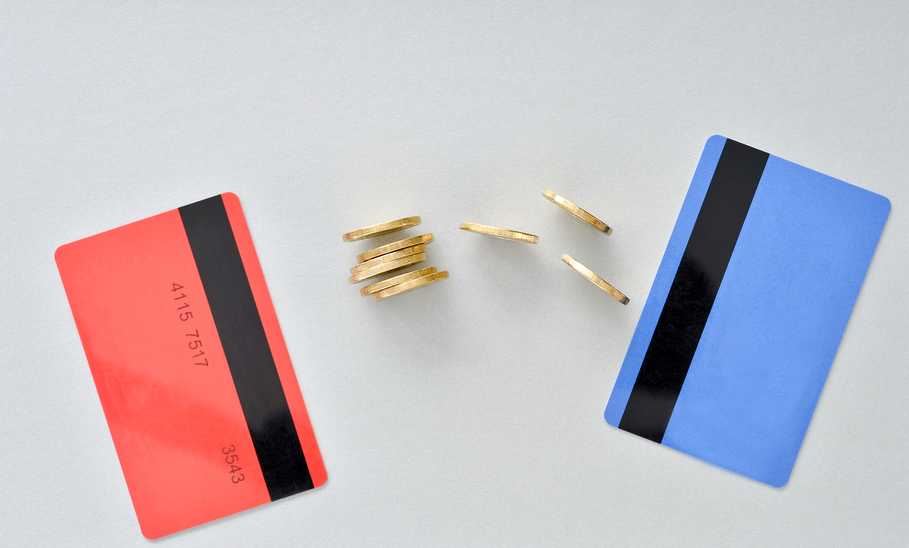How to Transfer a Credit Card Balance (The Right Way)

Our evaluations and opinions are not influenced by our advertising relationships, but we may earn a commission from our partners’ links. This content is created by TIME Stamped, under TIME’s direction and produced in accordance with TIME’s editorial guidelines and overseen by TIME’s editorial staff. Learn more about it.
Transferring a balance from one credit card to another offers a pathway to getting out of debt while also saving on interest, but only for those who pay more than the minimum payment required. The process is most rewarding when consumers get access to a new balance transfer card that offers 0% APR for up to 21 months with no annual fee, and when they come up with a plan to get out of debt before they start.
While balance transfer offers are fairly cut and dry, knowing the steps to a balance transfer (and common pitfalls to avoid) makes the process easier—and more hassle-free. Let's dive into the backend steps required to get a balance transfer to the finish line.
card_name | card_name | Citi Double Cash® Card | |
|---|---|---|---|
| Balance transfer intro apr | balance_transfer_intro_apr,balance_transfer_intro_duration | balance_transfer_intro_apr,balance_transfer_intro_duration | balance_transfer_intro_apr,balance_transfer_intro_duration |
| Credit score needed | credit_score_needed | credit_score_needed | credit_score_needed |
| Annual fees | annual_fees | annual_fees | annual_fees |
Imagine you have $5,000, $10,000, or any other amount in credit card debt, and your current card charges a high variable APR. Moving that debt to a new credit card with 0% APR can help you avoid interest payments while you pay off the debt. Here's how.
First, you'll want to choose a new card offer from the best balance transfer credit cards available today. Note that balance transfer offers tend to last for 12 to 21 months, and you have to pay balance transfer fees (typically 3% or 5% of the debt you transfer) to execute the transfer. Other factors to consider among balance transfer offers include credit card annual fees, rewards, and any perks that the new card provides.
Next, you'll want to make sure you fully understand the terms and conditions of the balance transfer offer you plan to sign up for. This means knowing the fee structure (including annual fees and balance transfer fees), the length of the intro APR offer, and all the other fine print.
Consider how the Citi Double Cash® Card works as a balance transfer credit card. This popular cash back credit card extends balance_transfer_intro_apr,balance_transfer_intro_duration, followed by a reg_apr,reg_apr_type. There's no annual fee, and the balance transfer fee is foreign_transaction_fee for balances transferred within four months of account opening. After that, it goes up to 5%.
Individual card fine print aside, you should also note that most credit card issuers won't let you transfer debt between different credit cards they offer. If you currently have debt on a Chase credit card, for example, you have to pick a new balance transfer card from a different issuer, such as Capital One or Discover. This is almost always the case, but you can read the terms and conditions of cards you're considering to know for sure.
Some balance transfer issuers may also set a limit on how much you can transfer. With Chase balance transfer cards, for example, cardholders can only transfer up to $15,000 in credit card debt over the phone or online within any 30-day period.
If you're planning to sign up for a new balance transfer card, there's a good chance the card issuer will ask for information on the debts you want to transfer during the application process. In that case, you would provide the new card issuer with the account number(s) of your other card(s)—and the amount of debt on them—that you want to transfer.
If you don't request a balance transfer when you apply for a new card, you will need to contact the balance transfer card issuer to initiate a transfer. You can do so:
Credit card convenience checks can also help with a balance transfer, typically when a cardholder writes out the convenience check to themselves—or to pay off the old card(s). However, carefully read the terms and conditions of these checks before you try to use them for a balance transfer. Many convenience checks are treated as a cash advance by the card issuer; you don't qualify for an interest-free period and don't even get a grace period.
The Federal Deposit Insurance Corporation (FDIC) warns specifically about this situation, stating that many credit card convenience checks are "really a cash advance loan," and that you "may not be allowed an interest-free period to pay the loan without interest accruing."
Next, you'll wait for the balance transfer to go through. This can take several weeks; the new balance transfer card issuer has to pay off your old debt—and add the debt to your new balance—before you can resume paying it off.
You will need to keep making payments on your old credit card balance until you know the balance is at $0 (as a result of the debt having been moved successfully). You can verify this by logging into your existing credit card account and checking your balance for updates. Once the old balance is $0, you can stop making payments and focus your energy on paying off your new card.
Once a balance transfer has been completed, all your debt should be on your new card, plus the amount of the balance transfer fee (3% or 5% of the amount you transferred). At this point, you'll want to pay as much as you can toward the debt each month—with the goal of paying off your balance completely before the introductory period ends.
For example, suppose you have $5,000 in credit card debt, and you transferred it to the Citi Double Cash® Card. This would necessitate a 3% balance transfer fee (equal to $150)— provided you transferred the debt within four months of account opening. In that case, you would have 18 months to pay off $5,150, which requires a monthly payment of at least $286.11.
Unfortunately, this is where things can get tricky. The FDIC notes that most consumers believe that they will pay off the debt before the introductory rate expires, but they may not be able to do so. In cases where the debt still remains after the introductory period ends, any remaining balance is charged interest at the regular variable rate.
The benefits of a balance transfer only apply to those who have a concrete plan in place to pay off debt—and the discipline required to see it through. These benefits can include the following:
Balance transfers don't always work out as people hoped they would. There are several risks and pitfalls to avoid, including the following.
The right balance transfer credit card varies from person to person and depends on how much debt they have, their credit score, and other factors. For the most part, you should compare cards based on the following:
Balance transfers work best when consumers are serious about debt repayment and approach the situation in a methodical way. This means knowing how much debt needs to be repaid, figuring out how much needs to be paid each month to become debt-free, and sticking to the plan.
If you owe $10,000 in credit card debt—and you can qualify for a balance transfer card that offers 0% APR for 21 months, for example—you would do the following:
If you want to get out of debt (and save money along the way), balance transfer credit cards offer that opportunity. You can get 0% APR for anywhere from 12 to 21 months if you pay a balance transfer fee, and the interest savings can be substantial over that time.
That said, balance transfer credit cards are not a solution to debt on their own. If you transfer debts but keep making new charges on credit cards you have, you may not be any better off when the introductory offer ends.
Balance transfer credit cards let you transfer debt from one credit card to another. This is most often done in order to get a lower interest rate and, potentially, even 0% APR for a limited time.
Balance transfers can actually improve a person's credit score—even after accounting for the new hard inquiry on a credit report that applies when someone gets a new card. After all, paying off debt reduces a person's credit utilization ratio, and this is the second most important factor that makes up FICO scores.
Consolidating debt with a balance transfer credit card can be a good idea if someone is serious about getting out of debt—and ready to make a lifestyle change. However, balance transfers can also make it easier to rack up even more debt in the long term.
The information related to Citi Double Cash® Card has been collected by TIME Stamped and has not been reviewed or provided by the issuer or provider of this product or service.
The information presented here is created by TIME Stamped and overseen by TIME editorial staff. To learn more, see our About Us page.



